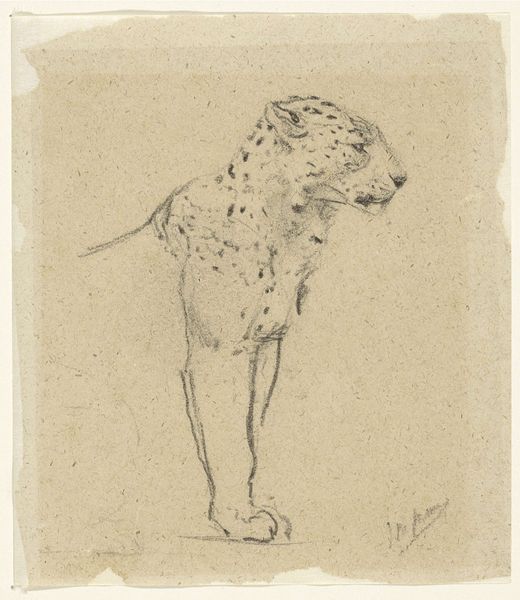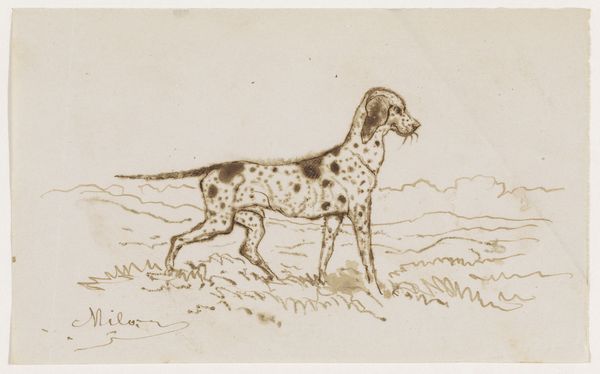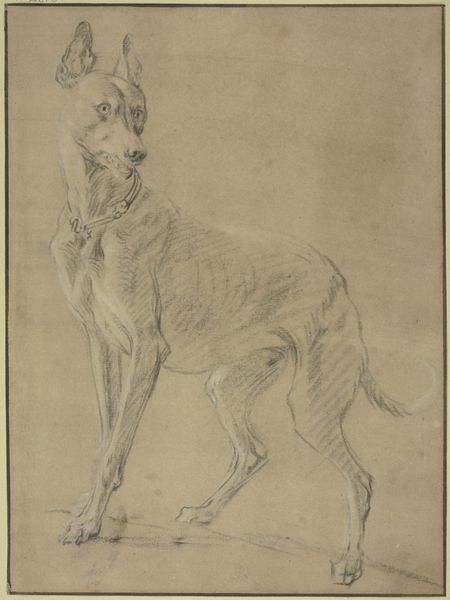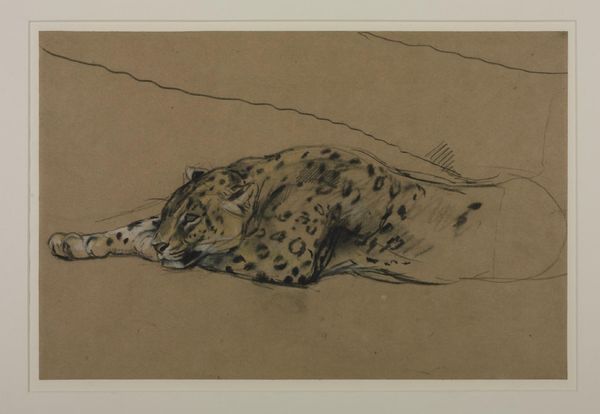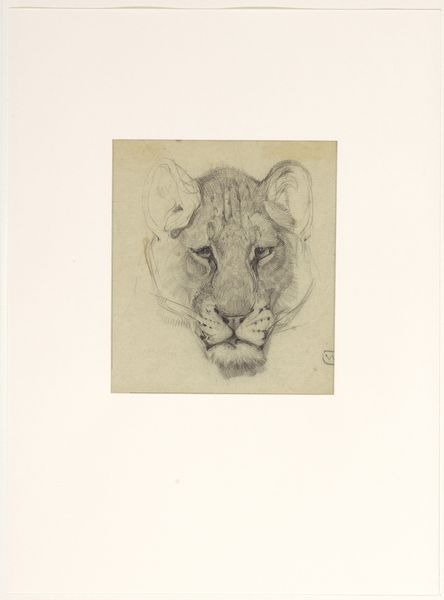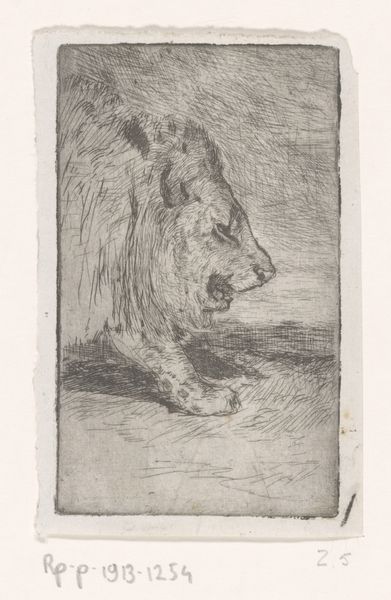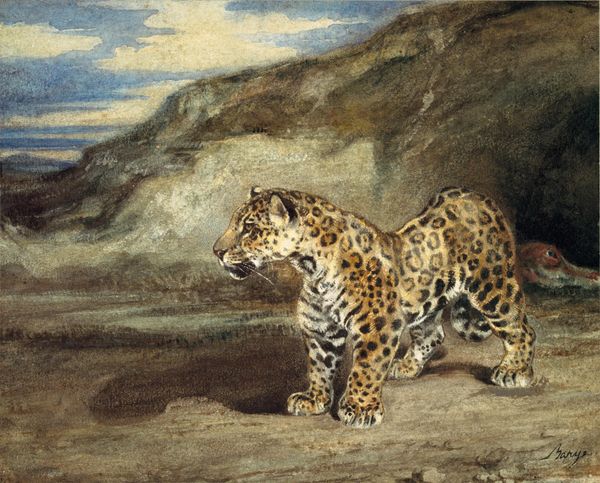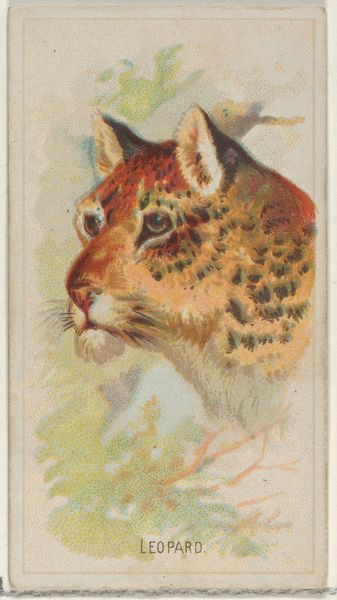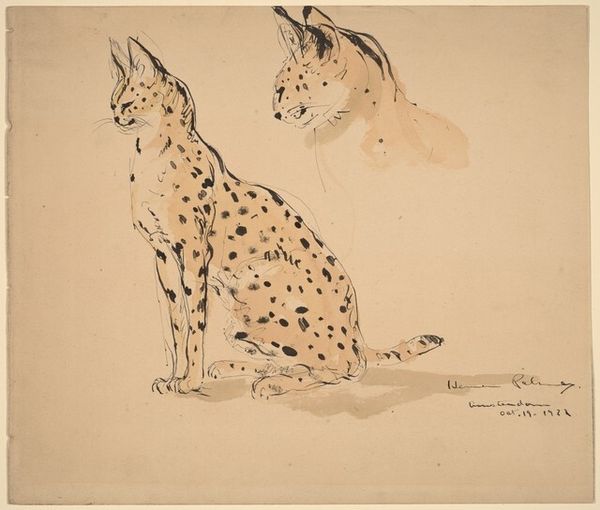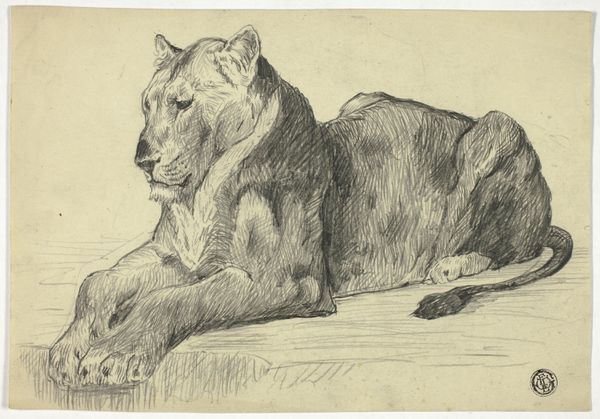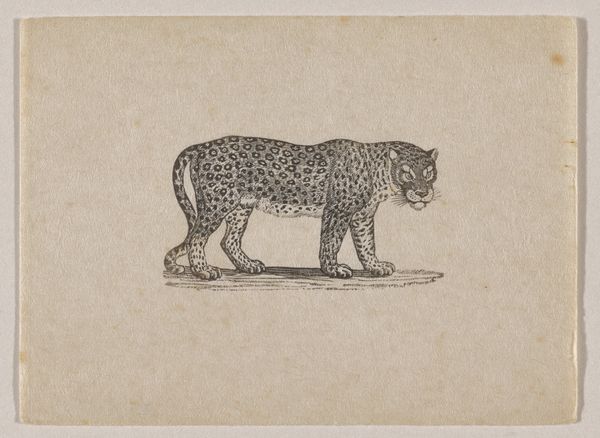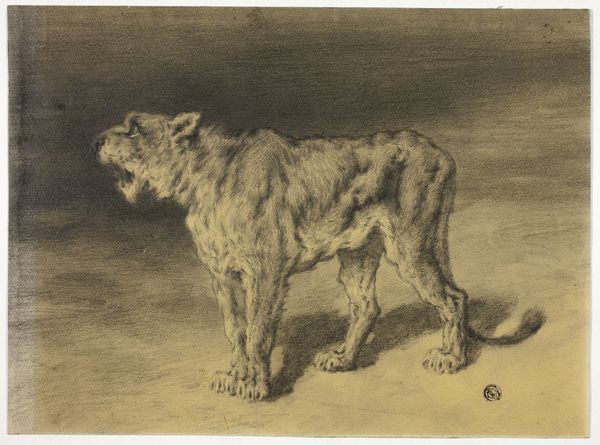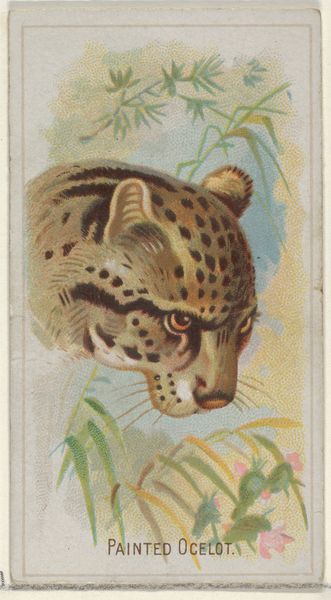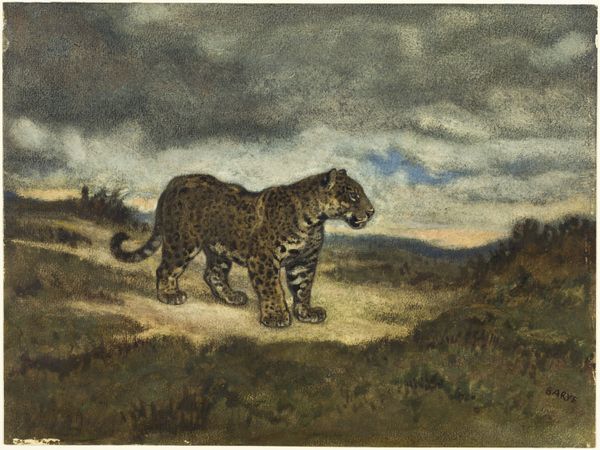
drawing, pastel
#
portrait
#
drawing
#
animal
#
landscape
#
figuration
#
pastel
#
watercolor
#
realism
Dimensions: sheet: 11 5/16 x 7 3/8 in. (28.7 x 18.7 cm)
Copyright: Public Domain
Curator: This is "Study of a Jaguar," a pastel and watercolor drawing by John Macallan Swan, created sometime between 1874 and 1910. It resides here at the Metropolitan Museum of Art. Editor: I’m immediately struck by its raw quality, almost unfinished. You can see the visible strokes of pastel, and the bare support peeking through. The texture created from these materials gives it a kind of visceral energy. Curator: Swan was fascinated by big cats. He spent a great deal of time at zoos and circuses, studying their anatomy and movements. This allowed him to portray these creatures in a realistic, yet dynamic, manner. His work raises interesting questions around humans observing and dominating nature, even within an aesthetic frame. Editor: Absolutely. Look how the application of pastel is different for the jaguar versus the landscape. The sky’s texture is light and swirly, but he has used layered strokes to build a muscularity and real heft into the jaguar. We see the hand of the artist— the work involved in representing nature in such a compelling way. Curator: It is interesting to note that animal studies became increasingly popular in the late 19th century. They speak to growing industrialization and urbanization; the creation of zoos and natural history museums became key cultural touchstones during that period. People yearned for images of the wild and the exotic in their increasingly urbanized environments. Editor: I think it’s more than just a yearning. It reveals something about our relationship with labor. In the modern industrialized world, the act of creating something with one's hands is becoming obscured. Swan emphasizes the material labor necessary to represent the raw vitality of a jaguar, highlighting the creative and artistic value of that physical work. Curator: An interesting point, especially given the rise of academic art at the time. Swan moved against the grain by embracing more spontaneous, less polished methods, despite academic pressure to perfect form and adhere to highly refined techniques. Editor: Precisely! The roughness isn't a defect; it's a feature! The artist's engagement with material itself becomes part of the work’s meaning, its relationship with process, labor and consumption of artistic materials is there, exposed. Curator: Thank you for highlighting that crucial element! It reshapes our perspective of both the piece and its moment in history. Editor: It just highlights how materials speak volumes!
Comments
No comments
Be the first to comment and join the conversation on the ultimate creative platform.
